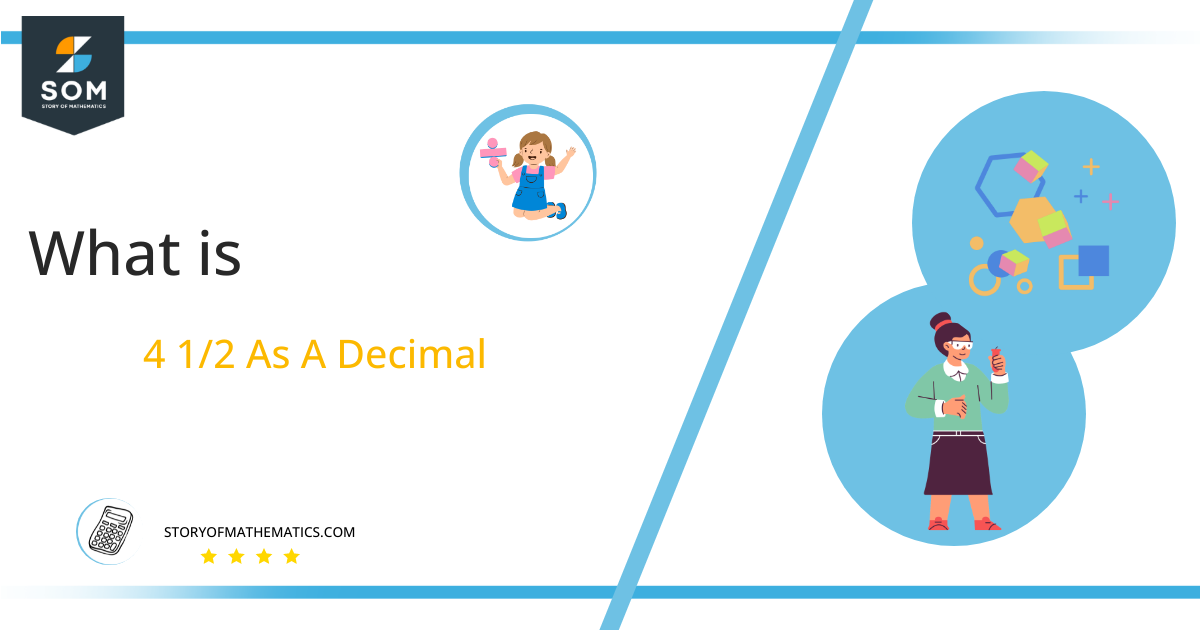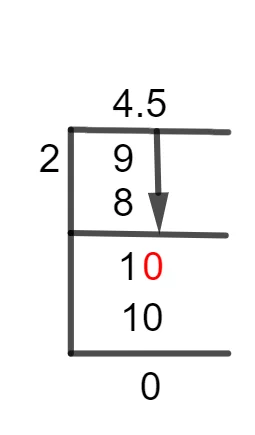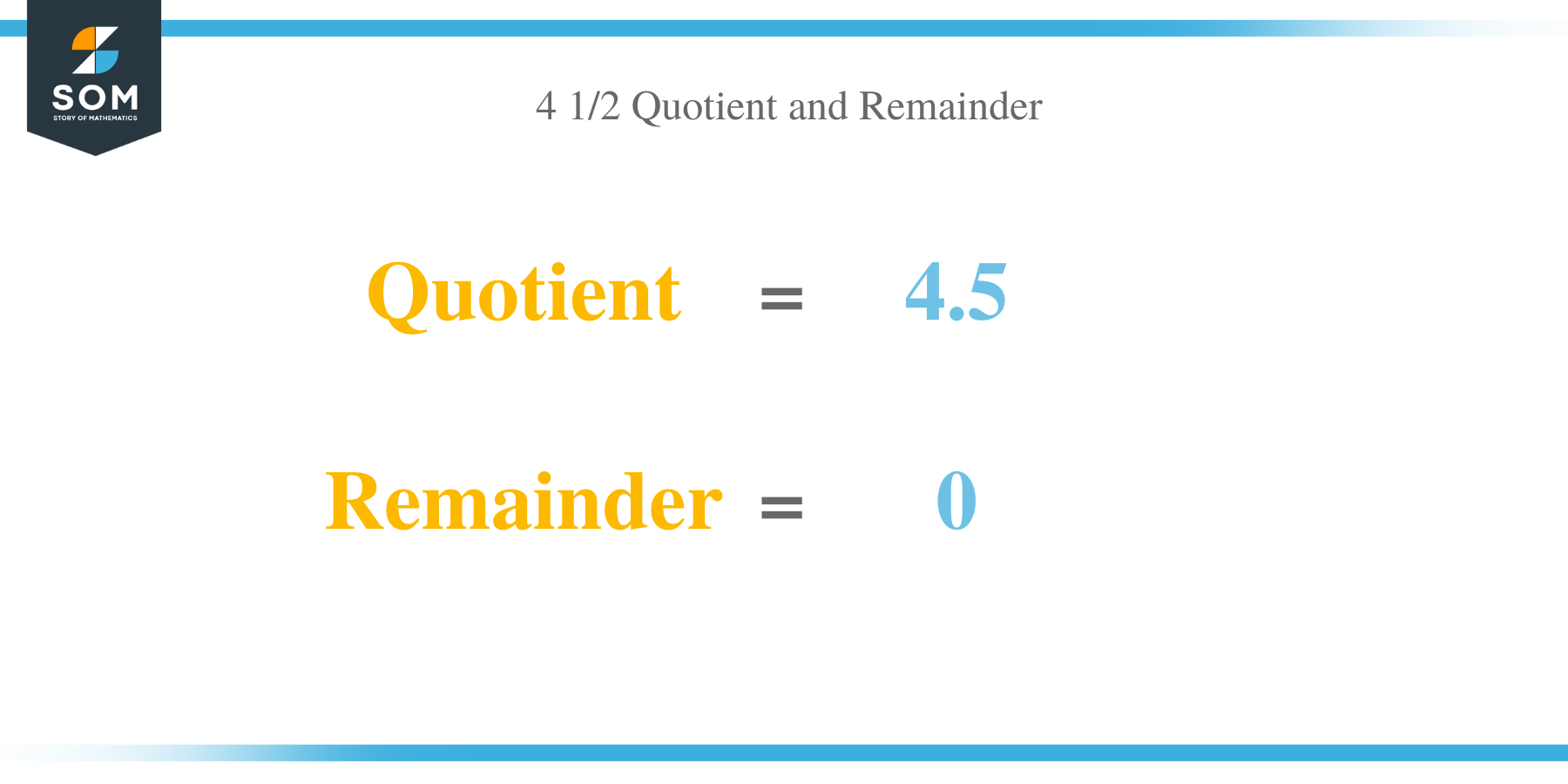What Is 4 1/2 as a Decimal + Solution With Free Steps

The fraction 4 1/2 as a decimal is equal to 4.5.
A Mixed Fraction combines a whole number with a proper fraction. For instance, within a fraction of 4 1/2, we have 4 as a whole number and 1/2 as a proper fraction. A mixed fraction is typically used to represent a number that is in between two whole numbers.
Here we are going to solve a mixed faction by Long Division.
Solution
A mixed fraction cannot be solved until it is converted into an Improper Fraction. To do this conversion, the denominator is first multiplied by the whole number, and the resulting product is then added to the numerator. The resulting value provides us with the improper fraction’s numerator, and its denominator is the same as in the case of the mixed fraction.
To convert 4 1/2 to an improper fraction, 2 is multiplied by 4 to get 8, and then 8 is added to 1. The resultant value is 9, which is the numerator of the desired improper fraction. Thus 4 ½ is equal to 9/2.
A fraction of 9/2 is solved by dividing 9 by 2. Consequently, we have 9 as a Dividend and 2 as a Divisor.
Dividend = 9
Divisor = 2
Our final result, known as the Quotient, is obtained after the division procedure is complete.
Quotient = Dividend $\div$ Divisor = 9 $\div$ 2
If there is any value left over after the division, it is described by the term Remainder.

Figure 1
4 1/2 Long Division Method
We will use long division to solve 9/2 to obtain the decimal value of 4 1/2.
9 $\div$ 2
The basic rule of division is to find a multiple of divisor, which is closest to the dividend, and then subtract it from the dividend. If we have a multiple of the divisor equal to the dividend, then we have zero remainders and the fraction is fully simplified. Otherwise, we have some remainder and we have to solve further.
In a fraction of 9/2, we will subtract 8 from 9, because 8 is the closest multiple of 2 to 9.
9 $\div$ 2 $\approx$ 4
Where:
2 x 4 = 8
We are left with a value of 1, which is also called the remainder.
9 – 8 =1
Consequently, we obtain a remainder that is bigger than zero but less than the divisor. Therefore, to find a more precise solution, we must now add a decimal point. By multiplying the remainder by 10, we can get this decimal point.
We now have 10 to divide by 2, which is 5 times multiple of 2.
10 $\div$ 2 $\approx$ 5
Where:
2 x 5 = 10
It is determined that Remainder is:
10 – 10 =0
Zero remainders illustrate that the fraction is completely solved and we don’t have to solve for it any more. The Quotient or result of this fraction is determined to be 4.5.
Images/mathematical drawings are created with GeoGebra.
